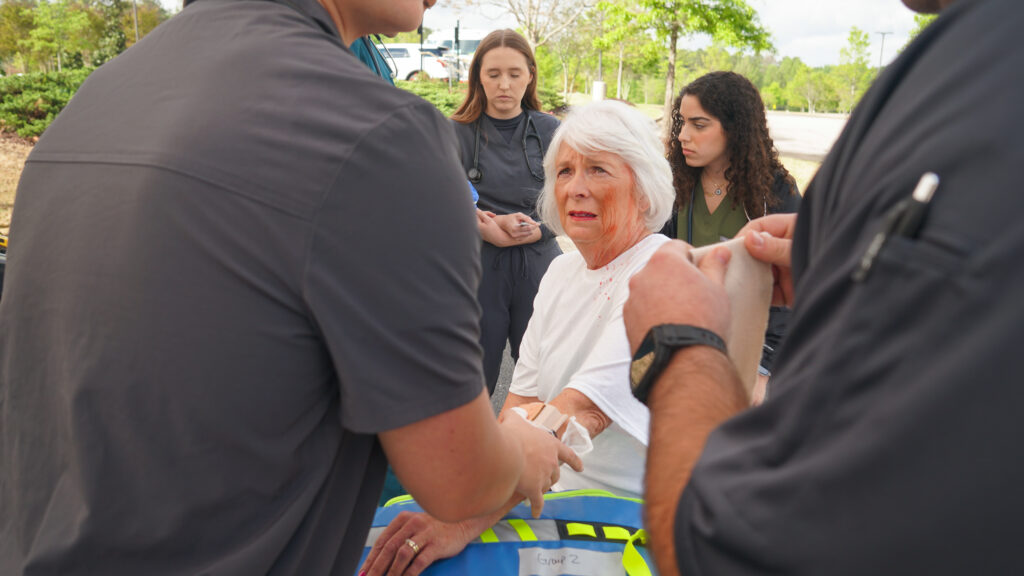Crafting a Comprehensive Policy and Procedure Handbook for Your Healthcare Simulation Standardized Patient Program

Healthcare simulation is a revolutionary pedagogical approach, providing healthcare professionals with hands-on experience in a safe and controlled environment. Central to the success of any simulation program are standardized patients (SPs), individuals trained to portray specific patients realistically. To ensure that your healthcare simulation center’s SP program maintains consistency, quality, and professionalism, crafting a comprehensive Policy and Procedure Handbook is paramount. This handbook serves as an invaluable resource for SPs and program administrators alike, fostering adherence to best practices and enhancing the overall simulation experience.

Before we get started if you are wondering what is a standardized patient? You can find the definition below:
A standardized patient (SP), also known as a simulated patient, is an individual who has been trained to portray a specific medical condition, history, or scenario in a consistent and standardized manner.
These individuals are often used in healthcare education and simulation to simulate real patient encounters for the purpose of training and assessing healthcare professionals. Standardized patients help create realistic and immersive learning experiences by presenting medical cases, symptoms, and behaviors that closely mimic those encountered in clinical practice. They allow healthcare students and practitioners to practice clinical skills, communication, and patient interactions in a controlled and safe environment before working with real patients. Standardized patients are a valuable resource in medical, nursing, and other healthcare education programs to enhance the competence and confidence of future healthcare providers.
Why Create a Policy and Procedure Handbook for Your Standardized Patient Program?
Standardization:
A well-documented handbook sets precise expectations, empowering SPs to comprehend their roles and responsibilities better.
Quality Assurance:
This handbook outlines best practices for SP recruitment, training, evaluation, scheduling, compensation, confidentiality, and professional conduct. Such guidance ensures that SPs are optimally prepared and consistently deliver high-quality performances.
Operational Efficiency:
Consolidating all policies and procedures into one document streamlines administrative processes, saving valuable time and minimizing the risk of misunderstandings or inconsistencies.
Legal Protection:
A comprehensive handbook can serve as a legal document, offering protection to both SPs and the institution in the event of disputes or issues related to performance or conduct.
Creating Your Policy and Procedure Handbook
- Gather Stakeholder Input: To ensure comprehensive coverage and relevance, establish a committee comprising SPs, simulation educators, administrators, and legal counsel.
- Identify Key Policies: Determine the essential policies and procedures for your SP program, encompassing areas like recruitment, training, evaluation, scheduling, compensation, confidentiality, and a code of conduct.
- Legal Considerations: Collaborate with legal counsel to ensure full compliance with relevant laws and regulations, including those concerning privacy and employment.
- Format and Structure: Design a user-friendly format and structure for the handbook. Employ clear headings, bullet points, and tables to enhance readability and comprehension. Consider using the ASPE Standards of best practice as a format guide.
- Detailed Descriptions: Provide comprehensive descriptions for each policy and procedure, using plain language and examples when necessary to ensure complete understanding.
- Training Guidelines: Outline the training process for SPs, including initial orientation, ongoing professional development, scenario-specific training, and required certifications.
- Performance Expectations: Define performance expectations, including the ability to accurately portray assigned patient roles, offer constructive feedback, and maintain professionalism throughout simulation sessions.
- Scheduling and Compensation: Specify how SPs will be scheduled for simulation sessions, as well as their compensation structure, payment methods, tax implications, and reimbursement policies.
- Confidentiality: Emphasize the importance of maintaining patient confidentiality and provide information on consequences for breaches. SPs should appreciate the sensitive nature of healthcare information.
- Code of Conduct: Establish a clear code of conduct outlining behavioral expectations for SPs, encompassing punctuality, effective communication, and respect for colleagues and learners.
- Evaluation and Feedback: Describe the process for evaluating SP performance and providing constructive feedback, ensuring mechanisms for continuous improvement are in place.
- Emergency Procedures: Include detailed procedures for handling emergencies during simulation sessions, such as medical crises or technical difficulties.
- Updates and Revisions: Create a structured process for updating and revising the handbook as needed, and ensure all SPs are informed of changes.
- Distribution and Acknowledgment: Clearly delineate the process for distributing the handbook to SPs and obtaining their acknowledgment of its contents.
- Appendices and Resources: Include any relevant forms, templates, or additional resources that SPs may require to fulfill their roles effectively.
Developing a Policy and Procedure Handbook for your healthcare simulation standardized patient program is a pivotal step toward ensuring the program’s success. It establishes a strong foundation for standardization, quality assurance, and legal protection. Moreover, it cultivates a sense of professionalism and consistency among SPs, ultimately elevating the effectiveness of your simulation center. Regularly reviewing and updating the handbook keeps it aligned with evolving best practices and regulations, guaranteeing the continued success and growth of your SP program. For further guidance on enhancing your healthcare simulation program, stay tuned to our blog.
